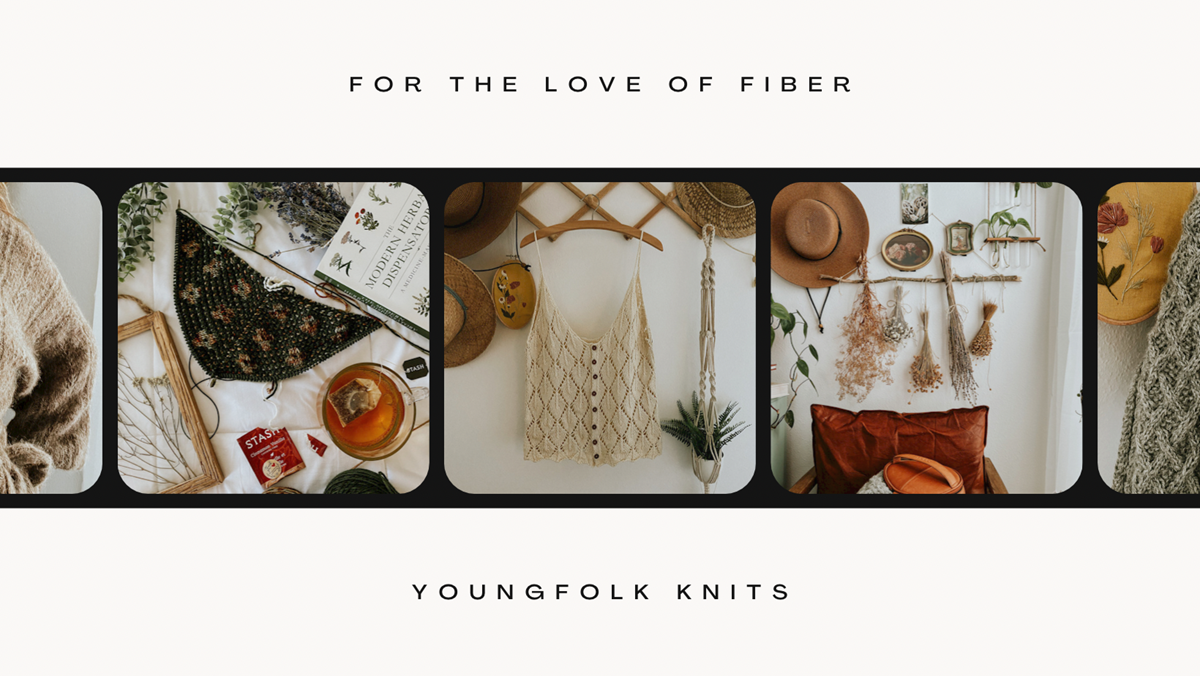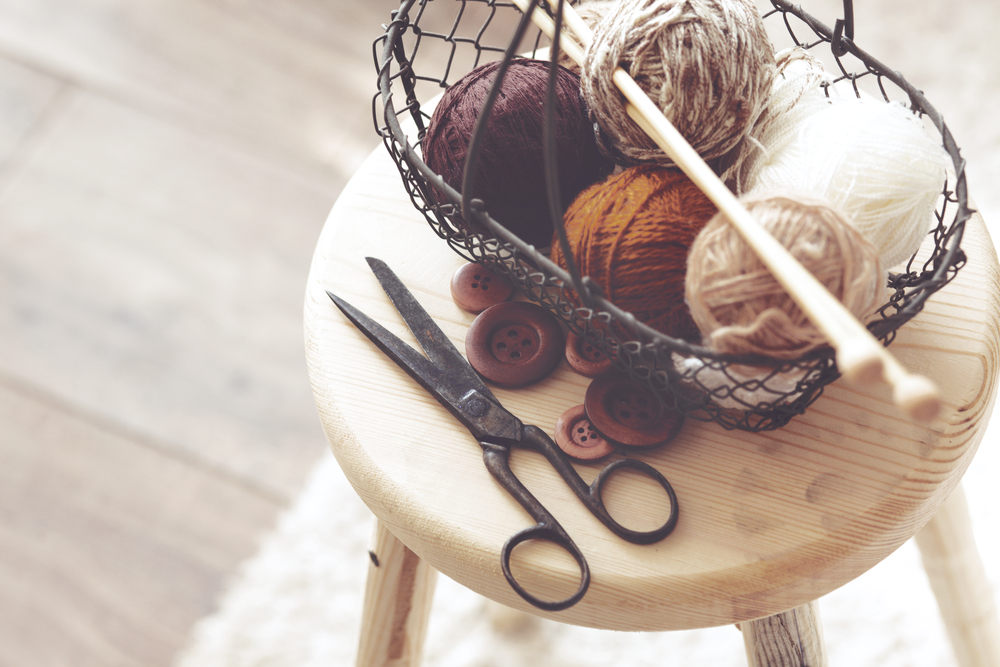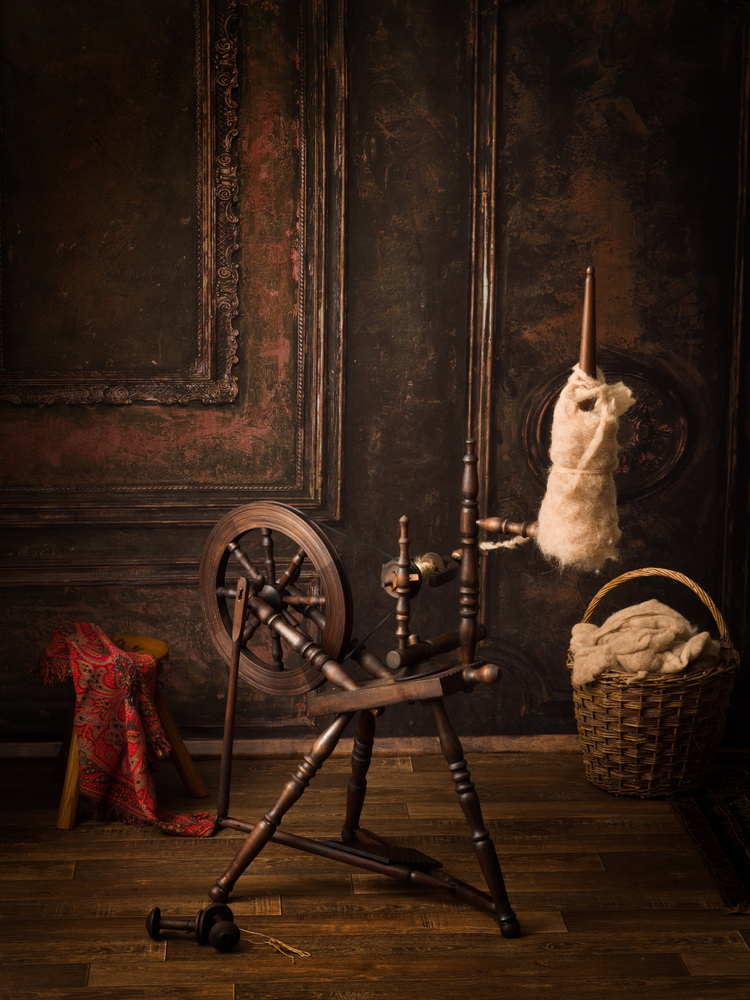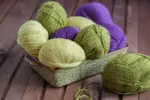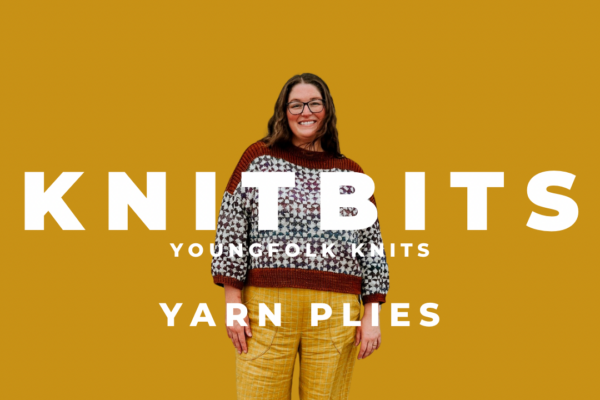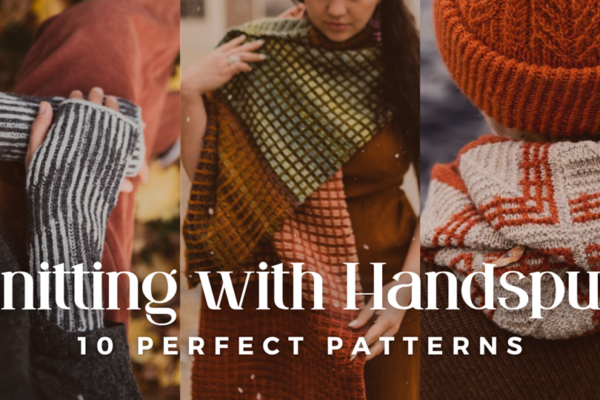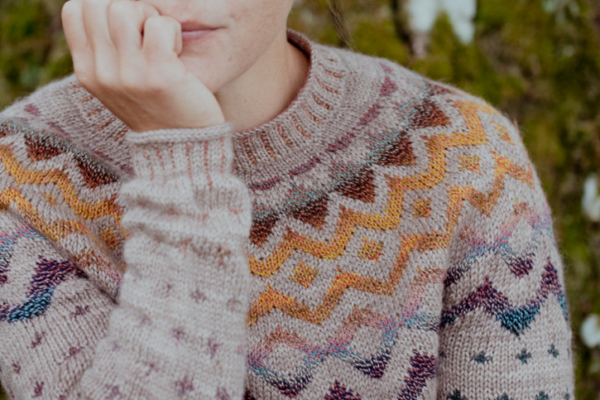Basic Knitting Stitches for Beginners
Basic knitting stitches are the foundation of learning how to knit successfully and being able to knit a wide range of projects. Many find it challenging to understand the basics of knitting stitches. Don’t worry! I have you covered. This post will look at basic knitting stitches for beginners.
Knitting Stitches vs. Stitch Patterns
Before diving into basic knitting stitches, it’s essential to understand the difference between knitting stitches and stitch patterns. Knitting stitches are the foundation of any knitted fabric and refer to the individual knit and purl stitches that make up the fabric. In contrast, stitch patterns combine knit and purl stitches arranged in a specific order to create various textures and designs.
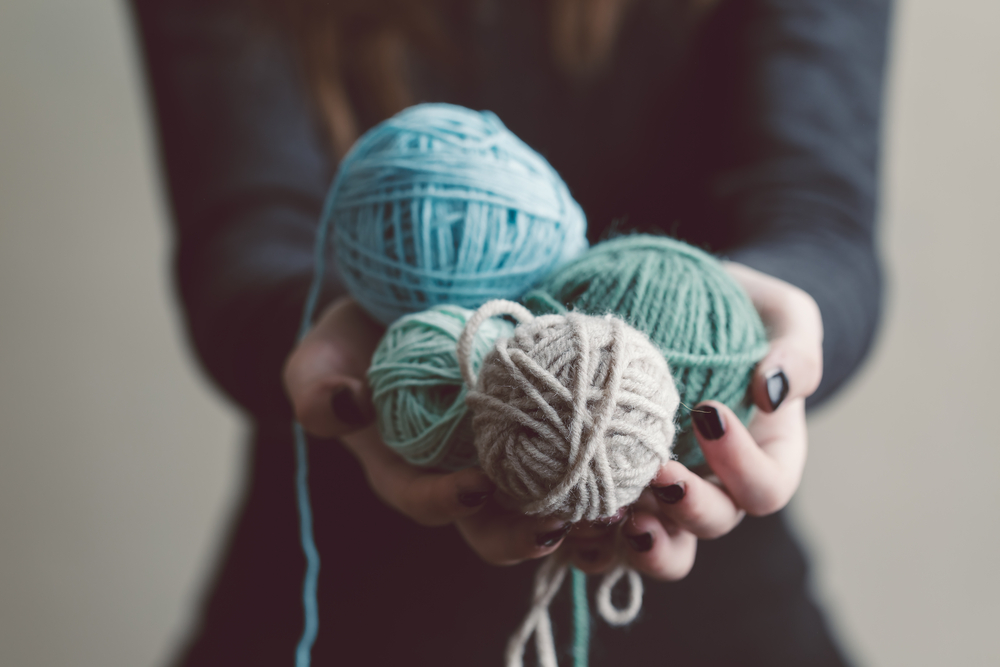
Summary: 30 Different Types of Knitting Stitches
This blog post will explore 30 different types of knitting stitches that beginners can learn and practice. From the essential knit and purl stitches to more intricate patterns like the moss stitch and herringbone stitch, you will be introduced to a variety of knitting techniques to enhance your skills.
Knit Stitch Patterns Organized by Row-Repeats
Some knit stitch patterns can be organized by the number of row repeats required to complete the pattern. These patterns usually have an even or odd number of stitches and rows, making them easy to follow and memorize. Examples of such patterns include the garter stitch, stockinette stitch, and seed stitch.
How to knit on an even or odd number of stitches
When working on a knitting pattern, you may come across patterns that require an even or odd number of stitches. To knit on an even number of stitches, simply cast on the required number of stitches and follow the pattern as instructed. For patterns requiring an odd number of stitches, cast on one additional stitch and knit or purl it as directed in the pattern.
Garter Stitch Scarf
The garter stitch is one of the most basic knitting stitches and is ideal for beginners. It creates a stretchy fabric with horizontal ridges formed by alternating knit rows. To knit a garter stitch scarf, cast on the desired number of stitches and knit every row until you reach the desired length. Bind off and weave in ends to finish your cozy scarf.
Reverse Stockinette Stitch (Purl)
The reverse stockinette stitch is created by purling every row when working flat or knitting every row when working in the round. It produces a textured fabric with purl stitches on the right side and smooth knit stitches on the wrong side.
How to knit the stockinette stitch?
The stockinette stitch is a basic knitting stitch created by alternating knit and purl rows when working flat, or knitting every row when working in the round. To knit the stockinette stitch, start by knitting one row, then purling the next. Repeat these two rows for the desired length of your project.
Moss Stitch
The moss stitch is a simple yet attractive stitch pattern that creates a textured fabric using a combination of knit and purl stitches. To knit the moss stitch, cast on an even number of stitches and follow this pattern:
- Row 1: K1, P1; repeat from to end.
- Row 2: P1, K1; repeat from to end.
- Row 3: K1, P1; repeat from to end.
- Row 4: P1, K1; repeat from to end.
Repeat rows 1-4 for the moss stitch pattern.
Beaded Rib Stitch
The beaded rib stitch is a beautiful, textured stitch pattern that adds an elegant touch to your knitting projects. This stitch pattern combines basic knit and purl stitches with slipped stitches, creating a fabric with small, raised “beads” along the ribbing. The beaded rib stitch is perfect for adding visual interest to a variety of projects, such as scarves, hats, and sweaters.
To knit the beaded rib stitch, cast on a multiple of 4 stitches plus 3 and follow this pattern:
- Row 1 (right side): K1, P1, K3; repeat from to last 2 stitches, P1, K1.
- Row 2: P1, K1, P3; repeat from to last 2 stitches, K1, P1.
- Row 3: K1, P1, slip 1 with yarn in back, K2; repeat from to last 2 stitches, P1, K1.
- Row 4: P1, K1, P2, slip 1 with yarn in front; repeat from to last 2 stitches, K1, P1.
Repeat rows 1-4 for the beaded rib stitch pattern.
Placing stitch markers between each pattern repeat can be helpful to ensure that the beaded rib stitch pattern is easy to follow. This will help you track your progress and easily identify any mistakes.
When working the beaded rib stitch, maintain consistent tension throughout your work, as this will help create even, well-defined beads along the ribbing. Additionally, using a smooth, plied yarn will help showcase the stitch pattern’s texture.
The beaded rib stitch is a versatile stitch pattern that can add a touch of sophistication to any knitting project. Experiment with different yarns, colors, and project types to see the full potential of this elegant stitch pattern.
Basic Knitting Stitches
Basic knitting stitches are the foundation of all knitting projects, including the knit and purl stitch. The knit stitch is created by inserting the right needle into the front loop of the first stitch on the left needle, wrapping the yarn around the right needle, and pulling it through the loop.
The purl stitch is created by inserting the right needle into the front loop of the first stitch on the left needle from the back, wrapping the yarn around the right needle, and pulling it through the loop. You can create various stitch patterns and knitting projects by mastering these two basic stitches.
What you can make with Seed Stitches
Seed stitches create a textured, bumpy fabric that is perfect for various knitting projects. You can make scarves, hats, blankets, dishcloths, and more with seed stitches. The versatility and simplicity of this stitch pattern make it a favorite among knitters of all skill levels.
Broken Rib Stitch
The broken rib stitch is a simple yet attractive stitch pattern that combines knit and purl stitches to create a textured fabric. To knit the broken rib stitch, cast on an even number of stitches and follow this pattern:
- Row 1: K1, P1; repeat from to end.
- Row 2: Knit all stitches.
Repeat rows 1-2 for the broken rib stitch pattern.
How to Knit Bamboo Stitch
The bamboo stitch is a unique and decorative stitch pattern that creates a fabric with raised purl stitches resembling bamboo shoots. To knit the bamboo stitch, cast on a multiple of two stitches and follow this pattern:
- Row 1: Yarn over, K2, pass the yarn over the two knit stitches; repeat from to end.
- Row 2: Purl all stitches.
Repeat rows 1-2 for the bamboo stitch pattern.
Andalusian Stitch
The Andalusian stitch is a simple stitch pattern that combines knit and purl stitches to create a textured fabric with a subtle diagonal pattern. To knit the Andalusian stitch, cast on a multiple of two stitches and follow this pattern:
- Row 1: Knit all stitches.
- Row 2: Purl all stitches.
- Row 3: K1, P1; repeat from to end.
- Row 4: Purl all stitches.
Repeat rows 1-4 for the Andalusian stitch pattern.
What can you make with Herringbone Lace Rib Stitches?
Herringbone lace rib stitches create a beautiful, delicate fabric with a unique texture, perfect for various knitting projects. This stitch pattern is ideal for shawls, scarves, and lightweight sweaters, adding a touch of elegance and sophistication to any outfit.
Double Moss Stitch
The double moss stitch is a variation of the moss stitch, with a slightly different texture and appearance. To knit the double moss stitch, cast on an even number of stitches and follow this pattern:
- Row 1: K1, P1; repeat from to end.
- Row 2: P1, K1; repeat from to end.
- Row 3: P1, K1; repeat from to end.
- Row 4: K1, P1; repeat from to end.
Repeat rows 1-4 for the double moss stitch pattern.
Basic Lace Stitch
The basic lace stitch is an introduction to lace knitting, a technique that creates open, airy fabric with intricate patterns. To knit a basic lace stitch, you’ll need to learn yarn overs (YO) and simple decreases like knit two together (K2tog) and slip, slip, knit (SSK). Start with a simple pattern, such as a diagonal eyelet pattern, to practice these techniques and familiarize yourself with lace knitting.
Bubble Stitch
The bubble stitch is a fun and textured stitch pattern that creates small “bubbles” or “nubs” throughout the fabric. This stitch pattern is perfect for adding interest and texture to various knitting projects, including scarves, blankets, and pillows. To knit the bubble stitch, you’ll need to master techniques such as knitting multiple stitches together and knitting into the front and back of a stitch to create the unique texture.
How to Knit the Linen Stitch Pattern
The linen stitch pattern creates a dense, textured fabric that resembles woven linen. This stitch pattern is perfect for projects like dishcloths, bags, and scarves. To knit the linen stitch pattern, cast on an even number of stitches and follow this pattern:
- Row 1: K1, slip 1 with yarn in front; repeat from to end.
- Row 2: P1, slip 1 with yarn in back; repeat from to end.
Repeat rows 1-2 for the linen stitch pattern.
Characteristics of the Basketweave Stitch
The basketweave stitch is a versatile stitch pattern that mimics the appearance of a woven basket. This stitch pattern combines blocks of knit and purl stitches to create a textured fabric that is perfect for blankets, scarves, and home accessories. Characteristics of the basketweave stitch include its reversible nature, dense texture, and ability to showcase different yarn types effectively.
How to Knit Netted Stitches
Netted stitches create an open, airy fabric that is perfect for lightweight and decorative projects. To knit netted stitches, you’ll need to learn various increases and decreases to create the openwork pattern. Common techniques used in knitting netted stitches include yarn overs, knit two together (K2tog), and slip, slip, knit (SSK).
What you can do with Linen Stitch patterns
Linen stitch patterns are versatile and can be used for various projects. Their dense, textured fabric is ideal for items like placemats, table runners, bags, and scarves. You can create stunning, visually appealing projects using linen stitch patterns by experimenting with different yarn colors and weights.
Rib Stitch
The rib stitch is a classic knitting stitch pattern that creates a stretchy fabric with alternating columns of knit and purl stitches. The most common rib stitch patterns are 1×1 rib (K1, P1) and 2×2 rib (K2, P2), but rib stitches can be worked with any combination of knit and purl stitches. Rib stitches are often used for cuffs, collars, and hems due to their stretchy nature and ability to retain their shape.
Basket Weave Stitch
The basket weave stitch is a textured stitch pattern that alternates blocks of knit and purl stitches to create a fabric resembling a woven basket. To knit the basket weave stitch, cast on a multiple of four stitches and follow this pattern:
- Rows 1-4: K4, P4; repeat from to end.
- Rows 5-8: P4, K4; repeat from to end.
Repeat rows 1-8 for the basket weave stitch pattern.
How to Knit Herringbone Stitch?
The herringbone stitch is a beautiful, textured stitch pattern that resembles the interlocking bones of a fish. This stitch pattern requires some practice but is well worth the effort. To knit the herringbone stitch, cast on an even number of stitches and follow this pattern:
- Row 1 (RS): Slip 1 knitwise, K1, pass slipped stitch over knit stitch; repeat from to end.
- Row 2 (WS): Slip 1 purlwise, P1, pass slipped stitch over purl stitch; repeat from to end.
Repeat rows 1-2 for the herringbone stitch pattern.
What can you make with Basketweave Stitch
Basketweave stitch is a versatile stitch pattern that can be used for various knitting projects. The textured fabric created by the basketweave stitch is perfect for blankets, scarves, dishcloths, and home accessories like pillows and cushion covers.
You can create stunning, unique projects using the basketweave stitch pattern by experimenting with different yarn types and colors.
How to Knit Purl Ridge Stitch
The purl ridge stitch is a simple stitch pattern that adds texture to your knitting with raised purl rows. To knit the purl ridge stitch, cast on any number of stitches and follow this pattern:
- Rows 1-2: Knit all stitches.
- Row 3: Purl all stitches.
- Row 4: Knit all stitches.
Repeat rows 1-4 for the purl ridge stitch pattern.
Raspberry Stitch
The raspberry stitch, also known as the trinity stitch or blackberry stitch, is a textured stitch pattern that creates small, raised “berries” throughout the fabric. To knit the raspberry stitch, cast on a multiple of four stitches and follow this pattern:
- Row 1: K1, (K1, P1, K1) into the next stitch, P3tog; repeat from to end.
- Row 2: Purl all stitches.
- Row 3: P3tog, (K1, P1, K1) into the next stitch, K1; repeat from to end.
- Row 4: Purl all stitches.
Repeat rows 1-4 for the raspberry stitch pattern.
How to Knit Chinese Wave Stitch
The Chinese wave stitch is a unique stitch pattern that creates a fabric with an intriguing wavy texture. To knit the Chinese wave stitch, cast on a multiple of three stitches and follow this pattern:
- Row 1: K1, slip 1 with yarn in back, K1; repeat from to end.
- Row 2: P1, slip 1 with yarn in front, P1; repeat from to end.
- Row 3: Slip 1 with yarn in back, K1, K1 in the stitch below the slipped stitch; repeat from to end.
- Row 4: Slip 1 with yarn in front, P1, P1 in the stitch below the slipped stitch; repeat from to end.
Repeat rows 1-4 for the Chinese wave stitch pattern.
How to Knit Tiles Stitch
The tiles stitch is a textured stitch pattern that creates a fabric with a geometric, tiled appearance. To knit the tiles stitch, cast on a multiple of four stitches and follow this pattern:
- Row 1: K2, P2; repeat from to end.
- Row 2: P2, K2; repeat from to end.
- Rows 3-4: Knit all stitches.
Repeat rows 1-4 for the tiles stitch pattern.
Diamond Honeycomb Stitch
The diamond honeycomb stitch is an intricate stitch pattern that creates a fabric with a raised diamond pattern. This stitch pattern requires some practice and involves techniques such as slipping stitches and passing slipped stitches over other stitches.
To knit the diamond honeycomb stitch, cast on a multiple of eight stitches and follow the provided pattern. Keep in mind that this stitch pattern may require more concentration and practice than some of the simpler stitches mentioned earlier.
Basic Knitting Stitches FAQs
In this section, we’ll answer some frequently asked questions about basic knitting stitches, providing helpful information for beginners and experienced knitters alike.
What are the most basic knitting stitches?
The most basic knitting stitches are the knit stitch and the purl stitch. These two stitches form the foundation of nearly all knitting patterns and can be combined in countless ways to create different stitch patterns and textures.
How do I cast on stitches?
Casting on is the process of creating the initial stitches on your knitting needle before starting your project. There are various cast-on methods, but the two most common are the long-tail cast-on and the knitted cast-on.
The long-tail cast-on creates a stretchy edge, while the knitted cast-on is simple and versatile. Both methods involve creating loops on the needle that will become your project’s first row of stitches.
What’s the difference between knitting and purling?
Knitting and purling are the two basic techniques used to create knit fabric. The primary difference between the two is the direction in which the working yarn is wrapped around the needle.
When knitting, the working yarn is held behind the work, and when purling, the working yarn is held in front of the work. The resulting stitches have different textures, with knit stitches appearing as “V” shapes and purl stitches appearing as horizontal bumps.
How do I switch between knitting and purling within a row?
To switch between knitting and purling within a row, simply move the working yarn to the front or back of the work as needed. When switching from knitting to purling, bring the yarn to the front of the work between the needles.
When switching from purling to knitting, move the yarn to the back of the work between the needles.
How do I count rows in my knitting?
To count rows in your knitting, look at the stitches on the fabric’s right side (usually the knit side). Each “V” shaped stitch represents one row. Count the “V”s from the bottom edge of your work to determine the total number of rows completed.
How do I bind off my knitting?
Binding off, also known as casting off, is the process of securing the final row of stitches in your knitting to prevent them from unraveling. The most common bind-off method involves knitting two stitches, then passing the first stitch over the second stitch and off the needle.
Continue knitting one stitch and passing the previous stitch over until all stitches have been bound off. Cut the working yarn, leaving a tail, and pull it through the last stitch to secure.
How do I fix a dropped stitch?
To fix a dropped stitch, use a crochet hook or your knitting needle to pick up the dropped stitch and “ladder” it back up through the slipped rows, following the pattern of the stitches in your work. Once the dropped stitch is back in place on your needle, continue knitting as usual.
How do I block my finished knitting project?
Blocking is the process of wetting, stretching, and shaping your finished knitting project to improve its appearance and even out any irregularities in the fabric. To block a project, soak it in lukewarm water with a gentle detergent, then gently squeeze out the excess water without wringing or twisting the fabric. Lay the project flat on a towel or blocking mat, and gently shape it to the desired dimensions. Allow the project to air dry completely before removing it from the blocking surface.
